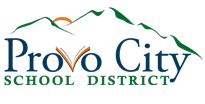Last modified: September 26, 2023
Policy No. 2140 School Improvement Planning
The Provo City School District Board of Education values the establishment and implementation of School Improvement Plans (SIPs) in every school throughout the district.
School improvement planning provides a mechanism for identifying needs and establishing a common approach to meeting those needs at the school level. Effective school improvement planning contributes to overall school performance by:
- Establishing an understanding of the “big picture” of a school’s current state, including student achievement, school environment, teacher community, parent community, and administrative issues;
- Reaching consensus across the school community on which needs represent the highest priorities for action based upon the potential to improve overall student and school performance; and
- Identifying for implementation goals and strategies, including specific targets, indicators and milestones required to address the school priorities.
A listing below outlines essential guidelines for inclusion in SIPs to ensure consistency and the continuous pursuit of high levels of student performance in all schools.
- A foundational intention of each SIP is that students will finish each year on grade level (at a minimum standard), fully prepared for the next school year. Where necessary, well-defined methods of working with students performing below grade level will be identified and utilized.
- SIPs will be created at least every two years, with regular spring and fall revisions based on performance that has been tracked throughout the year and the release of state assessment data.
- Every SIP will have a minimum of two goals; one for Math and one for English-Language Arts.
- SIPs may choose to add a 3rd and even a 4th goal, depending on specific needs of the school. However, Goals 1 and 2 should not be obscured through concentration on Goal 3 (and/or Goal 4). Some issues that may generate subsequent goals in a school may include Science, Communication, Technology, School Culture/Anti-Bullying, and so on. Additional guidance is also provided as follows:
- Elementary and Middle Schools – focus on student performance in the basics of reading, mathematics, and communications skills in elementary and middle schools,
- High Schools – additional goals may focus on student performance in courses required for graduation and on other measures required by the State Board of Education in high schools.
- Academic performance measures will, at a minimum, be performance at state averages. When a school is performing above state averages, aggressive yet attainable goals should be set for additional progress.
- Schools are to use the district SIP template when creating a SIP.
- A collaborative process should be used to develop a SIP, including school staff and parent input.
- Viable measures of accomplishment and/or effectiveness are included as part of the SIP template.
- School LAND Trust funding should be included as a funding source for appropriate SIP goals, strategies, and activities.
- The School Community Council should approve the SIP annually, ensuring compliance with district policy.
- The Board of Education will approve SIPs annually.
The Board directs the superintendent to ensure development and implementation of School Improvement Plans throughout the district in accordance with this policy. The superintendent, based on his/her judgment, may extend the SIP process to departments in the school district.
Legal References & Synopsis
Utah Code 53G-7-1204
School Improvement Plan
Approved by Board of Education
September 10, 2013
